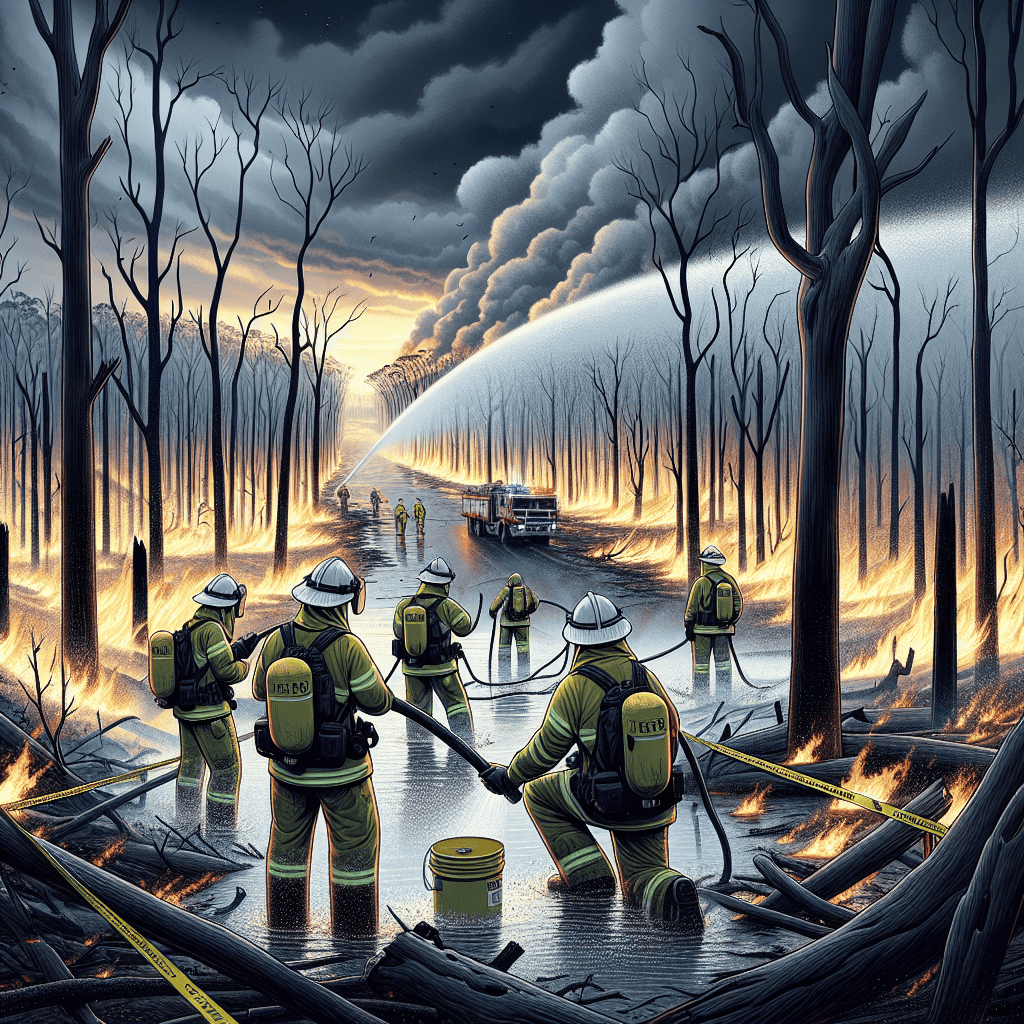Bushfires are a harsh reminder of the power of nature and the vulnerabilities we face. In Australia, where bushfires are an almost seasonal menace, preparedness and quick response often spell the difference between disaster and containment. Recently, a bushfire in Victoria has been brought under control, thanks to the tireless efforts of firefighters and emergency authorities. This achievement underscores the importance of rapid intervention, community cooperation, and strategic resource allocation.
In this blog, we’ll dive into the details of how Victoria managed to contain this bushfire, the safety measures being implemented for affected areas, and the broader implications it holds for fire management in a climate-challenged world.
—
Key Facts About the Victoria Bushfire
The bushfire that erupted in Victoria raised immediate concerns due to its potential to spread and threaten nearby communities. The fire, driven by strong winds and dry conditions, grew at an alarming rate before being brought under control. Here are some critical details about the incident:
- Location: The bushfire occurred in a densely vegetated region of Victoria known for its susceptibility to wildfires during dry weather.
- Timeframe: The situation escalated quickly but was contained within a short period, showcasing the efficiency and readiness of firefighting teams.
- Resources Mobilised: A coordinated response involving ground crews, aerial water bombers, and local authorities played a central role in preventing the fire from spreading further.
The successful containment of this bushfire is a testament to the training and preparation of emergency responders, as well as the crucial support provided by community members. The immediate priority now shifts to securing the affected areas to ensure the safety of both residents and wildlife.
—
How Authorities Brought the Bushfire Under Control
1. Swift Deployment of Resources
One of the primary reasons for the bushfire’s rapid containment was the swift deployment of firefighting resources. Firefighters, equipped with state-of-the-art safety tools and vehicles, were on the ground almost immediately after the fire was reported. Aerial support, including helicopters and water bombers, effectively tackled the flames in areas inaccessible to ground crews.
2. Cooperation Between Different Agencies
The containment effort saw significant collaboration between multiple agencies, including local fire services, emergency management teams, and environmental experts. The integrated approach allowed for quicker decision-making and more effective allocation of resources.
3. Community Alert Systems
The use of community alert systems in Victoria further amplified the efficiency of the response. Residents were promptly warned through SMS alerts, app notifications, and media broadcasts. This not only helped in evacuation efforts but also reduced the risk of injury or loss of life.
4. Containment Strategies
Firefighters employed strategies such as creating fire breaks and back-burning to stop the fire from advancing. These techniques, combined with favourable weather conditions following the initial outbreak, helped prevent the escalation of the situation.
—
Securing Affected Areas Post-Fire
Now that the fire has been contained, attention turns to ensuring the safety and recovery of affected regions. Authorities are implementing several measures to secure the area and assist residents in returning to normalcy:
- Ground Assessments: Experts are conducting ground assessments to evaluate the extent of the damage and identify potential hazards such as weakened structures or debris.
- Health and Safety Checks: Smoke from bushfires often lingers, posing health risks. Air quality monitoring is being conducted, and residents are advised to wear masks or avoid outdoor exposure where necessary.
- Restoration of Essential Services: Utility providers are working to restore services like electricity and water in areas impacted by the fire. This is crucial for ensuring that displaced families can return home safely.
Furthermore, wildlife rescue teams are also stepping in to assess the impact on local biodiversity, ensuring that injured or displaced animals are cared for.
—
Learning from the Incident: Future-Forward Fire Management
Every bushfire provides valuable lessons for better fire management in the future. The containment of the Victoria bushfire highlights several strategies that can be refined and replicated:
1. Leveraging Technology
The use of advanced tools like drones, satellite imagery, and remote sensing can further enhance early detection and response. By integrating these technologies, authorities can monitor fire-prone areas in real time and respond even faster.
2. Public Education
Educating communities about fire safety and preparedness is a critical aspect of bushfire management. Awareness campaigns can equip residents with the knowledge to reduce fire risks, such as clearing dry vegetation around homes and understanding evacuation procedures.
3. Strengthened Infrastructure
Rising temperatures and prolonged droughts, driven by climate change, mean that bushfires are likely to grow in frequency and intensity. Building fire-resistant structures and enhancing emergency infrastructure can mitigate some of the long-term risks.
4. Collaborative Approach
The successful containment of this fire illustrated the power of collaboration. Continued partnerships between governments, private organisations, and local communities will be essential moving forward.
—
The Broader Context: Climate Change and Bushfire Preparedness
Climate change has already intensified the bushfire season in Australia, with hotter and drier conditions contributing to more devastating fires. As incidents like the Victoria bushfire become more frequent, there’s an increasing urgency to address the root causes of these disasters.
Governments at all levels must prioritise climate resilience by reducing carbon emissions, investing in renewable energy, and protecting natural ecosystems like forests and wetlands. At the grassroots level, communities can also play a role by adopting sustainable practices and supporting reforestation projects.
—
Final Thoughts: A Season for Vigilance
The containment of the recent bushfire in Victoria is a collective victory, but it’s also a sobering reminder of the risks that persist as bushfire season continues. As recovery efforts unfold, it’s crucial for both authorities and residents to remain vigilant and prepared.
Whether it’s ensuring the safety of one’s family or supporting broader environmental initiatives, we all have a role to play in mitigating the impact of bushfires. Let us commend the bravery of the firefighters and emergency responders while continuing to build a safer and more resilient future for the region.
Stay safe and stay informed!


